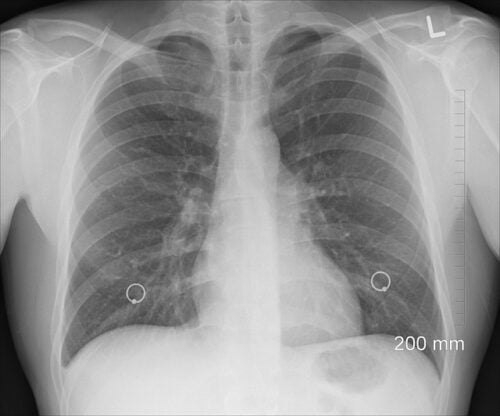Medical images like X-Rays and MRIs are awesome and a helpful part of the sports physical therapy process. It’s like peering into the secret life of our bones and tissues, but sometimes what we see can be a bit startling.
Picture this: You’ve just got your X-Ray or MRI results. There’s a moment of truth, where you feel like your body’s betrayed you. Maybe you’re staring at an image that seems to scream ‘surgery!’ or ‘pain for life!’
But hold on – it’s not all doom and gloom.
X-Rays provide physical therapists with more general information, especially with bones. They show us the spacing between vertebrae in your back or if there’s a sneaky fracture hiding in there. But when it comes to the softer stuff – muscles, tendons, ligaments – they’re a bit out of their depth.
This is where the MRI comes in, providing more detailed information about our intervertebral discs and soft tissues. It’s high-resolution and insightful, but sometimes all this detail doesn’t help us.
Research has shown that many of us are walking around with meniscal tears in our knees or disc issues in our backs, completely unaware because we feel fine. Then there are times when we’re in pain, get scanned, and the images come back with a shrug – nothing significant.
When it comes to back pain, about 90% of it is ‘non-specific’. Translation: even with all our tech, we can’t pinpoint the exact cause in most cases. So, do these images really matter?
Well, yes and no.
They’re super valuable when they align with what you’re feeling – when the story your body is telling matches the tale spun by the images. But if you’re holding an X-Ray or MRI report that’s making you second-guess your body’s capabilities, take a step back. It’s just one piece of a much larger puzzle.
Even if an image shows something that looks bad, it doesn’t mean you’re destined for surgery, or a life of pain or inactivity. Our bodies are incredible at adapting and healing. As physical therapists and sports performance coaches, we’re detectives in a way. We look for the root cause of the damage and focus on fixing it, not just the symptoms.
If you’ve got an X-Ray or MRI that’s got you worried, it is important to understand why these issues popped up in the first place and discover what you can do about them.
It’s not just about getting out of pain; it’s about getting back to living your life and doing the things you love, regardless of what the images say. So, keep moving, keep exploring, and remember, your body’s story is much more than a snapshot on a screen.

